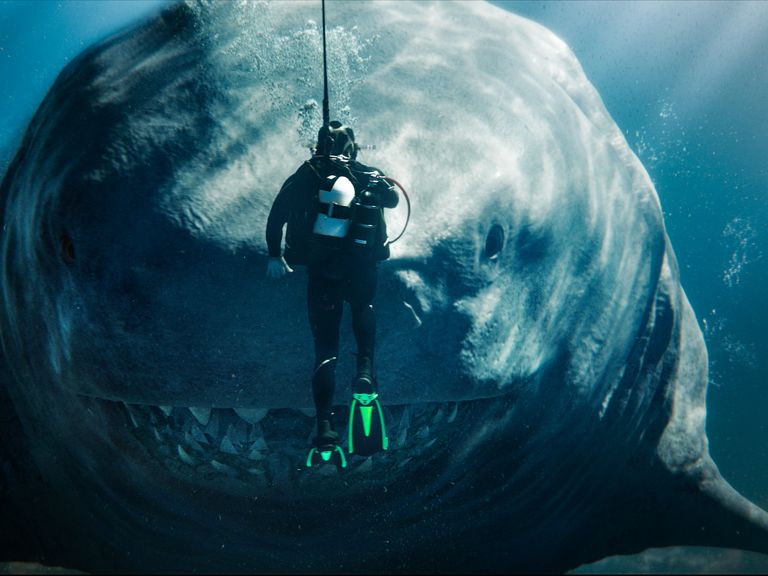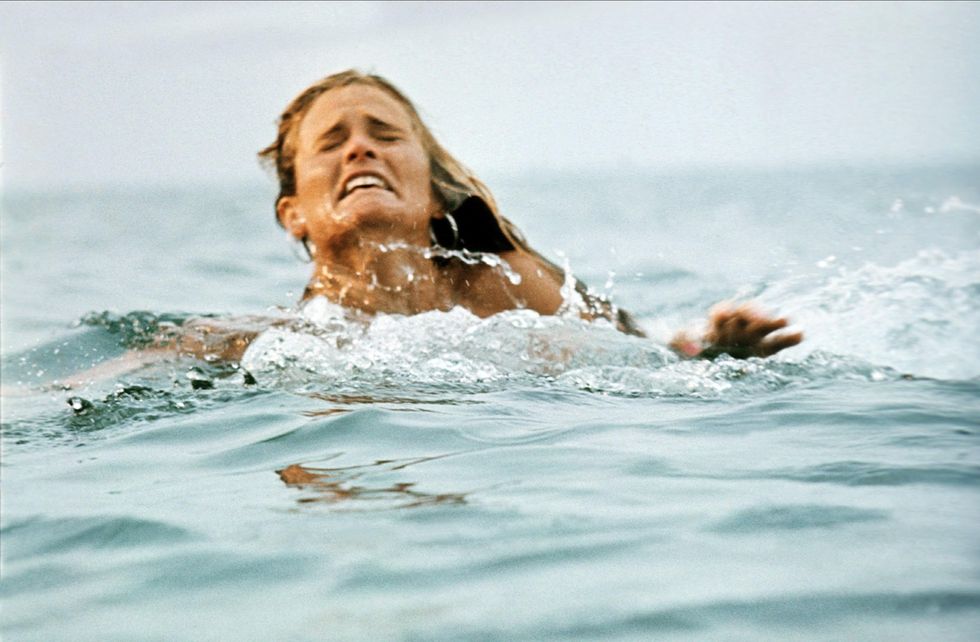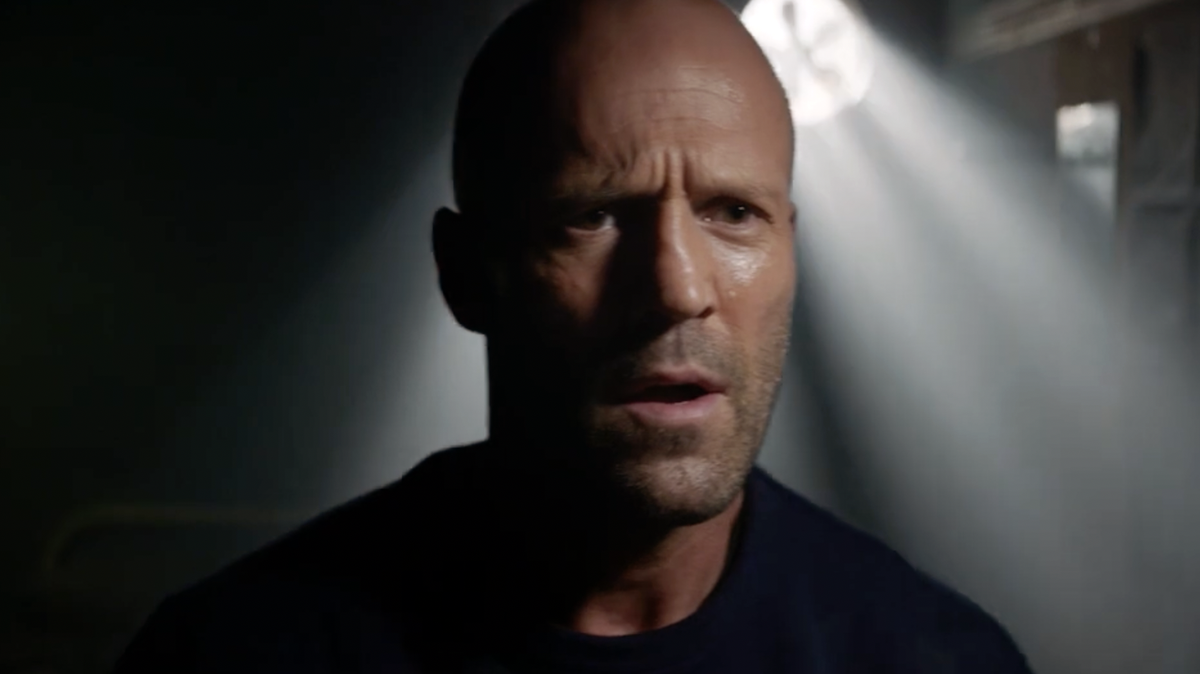When you achieve your PADI Open Water Diver certification, you are allowed to dive 18 metres down. You can see turtles, and jellyfish, and coral, and breathe under water for 40 minutes. When I was 15, this seemed like the most exciting thing one could do, because it meant 40 minutes of thinking time for whatever a 15-year-old thinks about. So into a beach hut on a tropical island, redolent of damp wood and stale beer, I went to engulf a textbook about hand signals (to this day, I’ve only ever used “okay”), the “bends” (not fun) and how to pace your oxygen use (wisely seemed to be the advice). A few days later – a scuba dive license is startlingly easy to acquire – I was underwater, looking at turtles, jellyfish, coral, flashing the “okay” sign to an instructor, and not getting the “bends”. When you are submerged in water, it is beautiful and calm. You do not think; you just admire. But when you are not submerged, instead bobbing along the top like a piece of meat in a SeaWorld enclosure, it is terrifying. And it’s there that I saw my first shark: a mother swimming about with her children, instilling the clearest sense of mortal fear thus far in my adolescent life.
This did not set me up for a lifetime of being a professional diver, but it could have set me up for being a niche film director, as I learnt while watching Sharksploitation, a new documentary from streaming platform Shudder that investigates Hollywood’s super-profitable, sordid history with the toothy creatures. In this, Open Water writer-director Chris Kentis expresses similar sentiments: “In every movie you see sharks underwater, and I never found them scary underwater, and diving with them is amazing.” He puts that to great effect for the 2003 film, in which two unlucky divers (played by Blanchard Ryan and Daniel Travis) are left behind by their boat to fend for themselves at sea. Riding the coattails of found footage horror films like The Blair Witch Project (1999), and based on a true story, Kurtis brings to life an astute observation: “After the dive on the surface, what’s disconcerting is a tail flapping by or a fin, and so I wanted to capture that, which is something I’d never seen before.”
Open Water, a film which effectively evokes damp terror, marked a renaissance for shark films, which had been floundering. In the decades since, there have been genuine box office successes like The Shallows (Blake Lively fights a great white after being stranded during a surf trip) and 47 Meters Down (two divers are locked in a diving cage, surrounded by great whites) and cultish B-movies like Sharknado (I feel no need to explain this one, and neither did the poster whose tagline simply states: “Enough said!”). Sharks, as the documentary makes clear, are big business yet again.
Where did our fear with sharks come from? Not island cultures, we learn, who revered the animal, believing that sharks were neither “malevolent or benevolent”, according to Dr. Emily Zarka, a professor and “monster expert”. Folklore told stories about helpful sharks: the Hawaiians once worshipped shark gods Kaʻahupāhau and Kahi’uka. Hollywood had other ideas. During the filming of 1969’s Shark, starring Burt Reynolds, a shark was rumoured to have killed a stuntman, a story which the producers spread in Life magazine. The 1971 documentary, Blue Water, White Death, from Peter Gimbel and James Lipscomb, is credited with introducing a wider audience to great whites with some terrifying real-life footage. But the monstrous turning point? That pesky Steven Spielberg and his 1975 mega-hit Jaws, which brought sharks to global notoriety and sharksploitation – exploitation films involving sharks – into the mainstream.
There is little to say about Jaws that has not been said already: the transfixing opening sequence, the two-note theme tune, how so much of it is shot from a very human, very vulnerable water level. That the shark appears so little but manages to cast its terror so wide. The film, which has earned around $2 billion at the box office when adjusted for inflation, is sometimes heralded as the first summer blockbuster. Many of the most interesting stories about Jaws are anecdotal: empty beaches following its release, people throwing up in the cinema, life-long fears of swimming. As Sharksploitation suggests, no one seems to have had as difficult relationship with the film as Peter Benchley, who wrote the source material, and later worked in ocean activism until his death in 2006. His wife, Wendy Benchley, explains that though they were “thrilled” with the book and film’s success, they were “horrified that people somehow felt that this was a license to go out and kill every shark they could”. According to the documentary, shark tournaments, in which the animals were hunted, surged in popularity after the film’s release. Last year, Spielberg told Lauren Laverne on Desert Island Discs: “I truly, and to this day, regret the decimation of the shark population because of the book and the film.” Though that decline likely has other contributing factors, such as overfishing, the film makes its mark, as both a cinematic milestone and enduring psychological phenomenon.
Maybe people stopped going in the water after Jaws, but they definitely kept watching as it exploded with increasingly bizarre species: sharks with laser beams (Goldmember), sharks with six heads (6-Headed Shark Attack), sharks that reached you through Ouija boards (Ouija Shark). Sharksploitation does a good job of following the trajectory of these films, with an increasing sense of mirth, until one of the biggest films (in terms of both box office and featured shark), The Meg. The film, about an extinct shark which is estimated to measure some 20m in length (a mild spoiler: in the film, the megalodon still exists), made over $500m at the box office. Its sequel, The Meg 2: The Trench, was released in cinemas over the weekend.
The thing about The Meg is that you always know where you are: in a lush underwater research facility, or a tightly-packed submersible, or chasing straight-talking action man Jonas (Jason Statham) down a zip wire into the ocean. Many films of its ilk (of which 1999’s horror flick Deep Blue Sea is perhaps the most memorable) introduce technology as a glossy comfort blanket, which quickly gives way to the power of nature. They all contain some variation of Jeff Goldblum’s much-quoted lament in Jurassic Park: Okay, sure, you can discover new ocean territories and awaken a megalodon, but should you?
In truth, the meg of The Meg does not scare. It is too fake, too comedic, too blundering. I’ll tell you who it does scare, though: the talking heads of Sharksploitation. In 2013, the Discovery Channel premiered Megalodon: The Monster Shark Lives, which presented itself in a documentary format, but was filled with dubious evidence and actors posing as experts. Heavily criticised, it naturally became the most-watched “Shark Week” programming to date (with almost 5 million viewers) and a poll revealed that 70% of viewers believed the megalodon still exists. As marine biologist Vicky Vásquez explains in Sharksploitation, the programme fooled people into believing megalodons were still out there, swimming about: “It did what Jaws did by accident”.
The Meg, and its sequel, will not make people believe they are treading water with a species of shark that lived millions of years ago. Your brain would still have to be in its early stages of development to watch Statham and co. hunt a giant shark and believe it verges on the realistic. The general consensus of Sharksploitation, from marine biologists and horror film experts, is that Hollywood’s reliance on sharks is not really a problem. If films make people interested in the ocean, and they do, it’s not a problem. It helps that Jaws’ marine biologist, Matt Hooper (played by Richard Dreyfuss), looks so cool: denim jacket, beat-up sweater and bucket hat. But I wondered, six shark films deep, what makes those of us, who have absolutely no desire to be a marine biologist, keep watching?
What these films rely on is delusion. During 47 Meters Down, I thought to myself: How easily I could escape from that sunken cage, manoeuvre my way around those great whites, float for five minutes to decompress, and rise to the surface with a hell of a story to tell. And then remembered that I had been nearly defeated by a particularly rainy Saturday in London recently. I would simply never go into shark-infested water, no matter how desperate I was for an ocean view, or to cool myself, or just to be an interesting person, before remembering that I have flung myself off the side of a boat to look for migrating whale sharks (didn’t find ‘em). When I saw that shark in real life, I was scared, yes, but also completely calm: How had I, an ordinary person, ended up in an extraordinary situation? It was never about the shark; it was always about us, bobbing along in the water, contemplating our humanity.
You can watch ‘Sharksploitation’ on Shudder and ‘The Meg 2: The Trench’ in cinemas
Henry Wong is a senior culture writer at Esquire, working across digital and print. He covers film, television, books, and art for the magazine, and also writes profiles.















